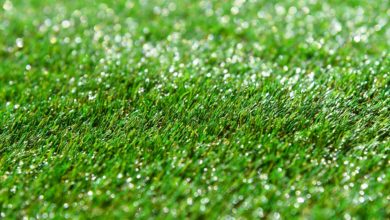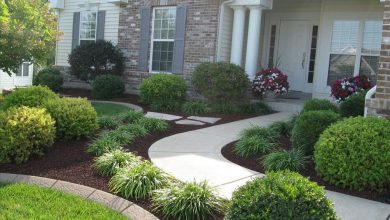Growing Moss in Your Garden

Introduction
There’s something about the color, texture, and overall look of moss that gives your garden that secret aged aesthetic. If you want to skip the tedious part and get your landscape covered with moss, you can search for “landscape companies near me” and hire professionals for the job. On the other hand, you can also grow moss by yourself at home. Let’s check out how you can do that:
The Process
The Moss plant – The moss plant is categorized as bryophytes. That means they are non-vascular plants that lack the usual parts we see on plants. It doesn’t have true roots, leaves, or even branches. Since there are no roots, moss uses other methods to absorb water and that’s why it usually grows in damp and shady locations.
Moreover, moss doesn’t grow seeds. Instead, moss varieties spread themselves by dividing or with spores. That’s why you’ll find moss colonies instead of moss plants. Several plants grow close to each other, and this creates that unique and smooth carpet look. Growing moss also has many benefits over other plants.
Unlike other plants, moss has low nutritional needs and doesn’t require the use of fertilizers. As long as it gets the right amount of water and sunlight, it can grow well. It also requires a scarce amount of water compared to other plants and helps to filter out the heavy metals, dye, and oils from water. They are also great at protecting the soil from erosion.
- Types of Moss – There are three types of moss plants – Music, Hepaticae, and Anthocerotae. Music is the common type of moss most people are familiar with. Some Music moss may have matted stems while others have upright stems. On the other hand, if you live in a highly humid region with plenty of shade, you may prefer to grow Hepaticae.
Unlike Hepaticae or Musci, Anthocerotae is very rare and also known as hornworts. They can be easily identified by their pointed branches and their spores. Similar toHepaticae, they prefer highly humid regions. However, they can’t be grown in shady areas and need a lot of sunlight throughout the day.
- Tools and Growing Conditions – You’ll need a few tools for growing moss. They include:
- Scissors
- Pincers
- Spray bottle
- Trowel
- Hand rake
- A pair of safety gloves to protect your hand.
You also need to provide moss with the right environment for optimal growth. Apart from moisture and shade, moss needs acidic soil with a pH value of 5.0 to 6.0. You’ll also need a weed-free area and implement a way to shade the plant from the harsh afternoon sun.
- Growing moss on soil – To grow moss you need to purchase a batch or forage it from nature. Foraging it is the best opinion since it won’t be dry and would be free from chemicals. Go out after a rainy day and search for damp places to forage moss. It may be growing on the backyard shed, on logs, on tree barks, and more such areas.
After you forage moss, take it to the area where you want to grow it. Use a hand rake to loosen the soil and make sure that moss makes good contact with it. After that, you can wet the area, lay the moss over it, and press it firmly into the soil. You can also place a few light rocks to make sure the moss doesn’t get blown away. Keep the moss moist for a few weeks and it will start to grow on the soil and spread on it as long as it gets enough moisture and partial shade.
- Growing moss on rocks, bricks, and containers – Growing moss on rocks isn’t easy. For this challenging task, you need to cultivate moss in a bowl by mixing it with buttermilk. Mix 1 or 1.5 cups of dried or fresh chopped moss with 2 cups of buttermilk. Stir the blend till creamy consistency. You can add water if the mixture gets too thick.
Allow the mixture to settle for a couple of days to cultivate moss and then paint it on rocks, bricks, or any other such hard surface. Mist the paint with water if it seems too thick. Make sure not to wash away the moss spores. You need to keep a check on the painted surface and spray it routinely to keep it moist. Stick to this routine and after six weeks you should see signs of moss. After that, you can moisten the area with a garden hose, similar to traditional grass.
- Maintaining moss – To keep your moss alive, healthy, and growing consistently, you need to do a few things. Fallen leaves and weeds need to be kept away at all costs. You also need to maintain shade and keep the moss moist. Unlike the growing phase where you moist the moss with a small amount of water and a spray bottle, you can use a watering can. Check if the moss is faded and touch it to feel if it’s dry. That’s the right time to water the grown moss.
There’s no need to buy fertilizers or develop compost to maintain moss. You can save it for other plants in the garden. If you’re growing moss in a container indoors, you need to mimic its natural growing conditions. Indoor rooms have a lack of sunlight compared to outdoors, that’s why you need to keep it in a well-lit corner. Without the small amount of sunlight, moss would fade and die very quickly. You also need to keep the windows open so that there’s proper ventilation.
Conclusion
As you can see, growing moss can be very easy in your home garden. With regular care, you can easily grow a beautiful moss carpet. However, controlling the growth exactly the way you want to make it a seamless part of your landscape can be difficult. That’s where professionals come in. You can search for “landscape companies near me” to hire reputed professionals near you for the job.






